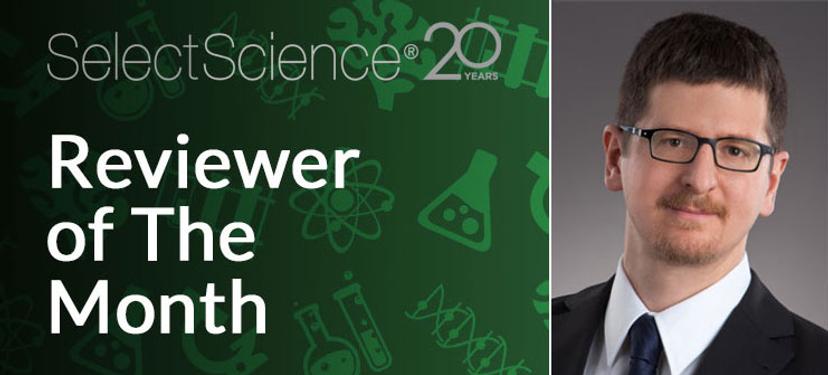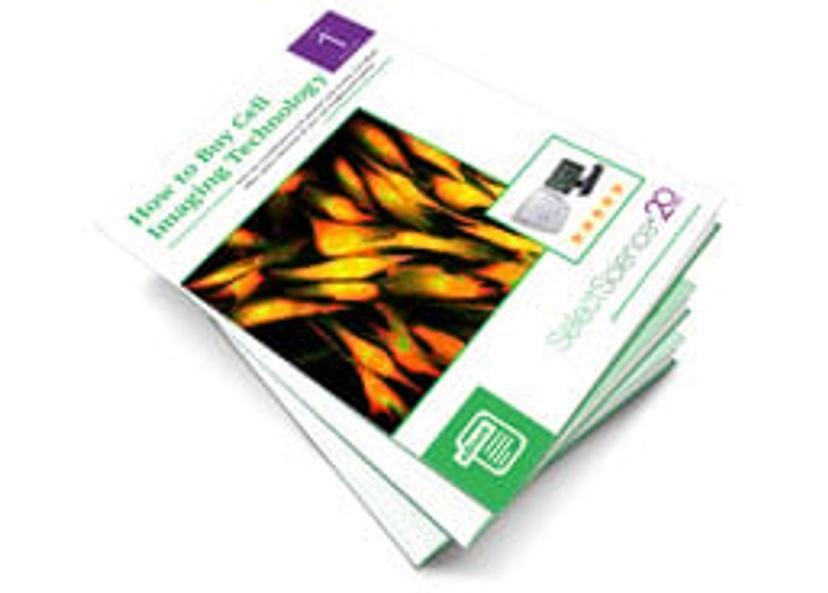Starting Your Own Lab: Expert Advice
Christoph Roesli, scientist and reviewer of the month, describes his fascinating journey through science, and gives his top tips on selecting equipment when establishing a new research group
29 Nov 2018

We caught up with one of our elite, expert level scientific product reviewers, Christoph Roesli, who heads a late-stage development biologics team at Novartis and asked him about his life, research and motivations when it comes to sharing his scientific experiences through science product and equipment reviews.
A curiosity in the world of science
I grew up with a direct access to a microbiology lab, which was headed by my parents. That’s where my interest in the world of sciences comes from.
Following his studies in molecular and cellular biology at the Swiss Federal Institute of Technology (ETH) in Zurich, Switzerland, Roesli joined the laboratory of Prof. Dario Neri at the Institute of Pharmaceutical Sciences of the ETH to perform his Ph.D. During this time, and his subsequent postdoc, Roesli’s research focused mainly on the identification of novel, vascular-accessible antigens in newly formed blood vessels of diseased tissues. This work was applicable to a range of different types of disease state, such as cancer, brain tissue in Alzheimer’s disease and kidney tissue in diabetes.
After this research, Roesli led a research group on chemical proteomics and antibody selection at the Heidelberg Institute for Stem Cell Technology and Experimental Medicine (HI-STEM) and the German Cancer Research Center (DKFZ) in Heidelberg, Germany. Since a transition into industry in 2015, Roesli’s work now focuses more on the development of both new biologic entities and biosimilars. He now heads a laboratory at the Novartis headquarters in Basel, Switzerland, looking to both develop methods for sample analysis and elucidate the structures and other characteristics of biologics in late-phase development.
Top tips on establishing a new research group
Establishing a research group from scratch comes with a wealth of tasks, which are mostly new for the group leader and which often must be performed concurrently. This poses both a challenge and a threat, as a successful start of a research group is key to achieving the ambitious goals usually set for such teams. Furthermore, initial funding periods are often limited in their duration, aggravating the problem even further.
The two main challenges during the establishment of a research group are identifying the right co-workers, and setting up the laboratory infrastructure. Here are Roesli's top tips on conquering these challenges.
Identify the right co-workers:
- Hire the right people. As there is often a time lag between being hired and starting, it might be possible to plug into the receiving institution's hiring programs (for example, Ph.D. or postdoc programs) before your start date. This gives you an opportunity to identify and hire co-workers beforehand, resulting in a smooth start.
- Get support. Consider hiring a technical assistant familiar with the workflows at your institution. This person’s network is priceless when it comes to navigating internal processes.
- Maintain a knowledge base.While it is important to have a certain number of co-workers starting at the same time as the group leader, the timing of additional team members must be planned well in advance. Based on the length of a typical Ph.D. thesis or postdoc period, the hiring process should be staggered to avoid any loss of knowledge at a certain time point.

Set up the laboratory infrastructure:
- Prepare a thorough development plan. While the research topic is often defined beforehand, the direction of the group might deviate over time. Furthermore, technical developments in the field might require adaptation of the lab equipment. Standard lab equipment such as pipettes, centrifuges and thermomixers should be purchased immediately. Alignment with the brands available at the receiving institute might also be financially beneficial.
- Carefully research and evaluate equipment before purchase. Large equipment, such as microscopes, mass spectrometers or surface plasmon resonance systems should be evaluated more carefully before purchase. Preferentially, such instruments are initially used in collaboration with other research groups or through core facilities, allowing for a detailed assessment of the group’s requirements. Sharing such instrumentation also has additional benefits, as the systems are already up and running and there is likely to be technical expertise available and collaborations/networks can be established.
- Stay at the forefront of new equipment. As soon as the progression of the research group becomes limited by instrument availability, you need to look at acquiring more equipment. It may be that the field has developed in the meantime and a new version of an instrument can be purchased, enabling the research group to stay at the forefront of its research field.
Achieving scientific success
In my lifetime, I’d like science to achieve an in-depth understanding of the complex interplay between DNA, RNA, proteins, glycans, lipids, metabolites and microorganisms.
What’s the biggest story in science right now?
“While the interplay between different objectives (be it molecules, animals or planets) can often be fairly accurately simulated based on experimental data, visual images provide more information and are more directly graspable. For me, the biggest stories in science right now are developments in imaging, starting from electron cryomicroscopy for the visualization of single molecules, to the James Webb Space Telescope for the imaging of stars and galaxies.”
What first brought you to SelectScience?
“The research group I was able to lead at HI-STEM and the DKFZ was established from scratch. When starting with an empty lab and facing the challenge to get it running within a few months, decisions to buy basic equipment must be taken very fast. The SelectScience website significantly supported this selection process and the right equipment was purchased.”
What’s the most innovative piece of equipment you use?
“Having the chance to work with a wide variety of specialized labs at Novartis, access to almost any type of equipment is assured. In my direct environment, Orbitrap-based mass specs are the most innovative piece of equipment.”
Why are reviews important?
“Vendor-independent information on lab equipment is often hard to get. Reviews on SelectScience can support decision-making processes and are a valuable source of information.”

Want to showcase your work by being our reviewer of the month? Write a review to get started:
